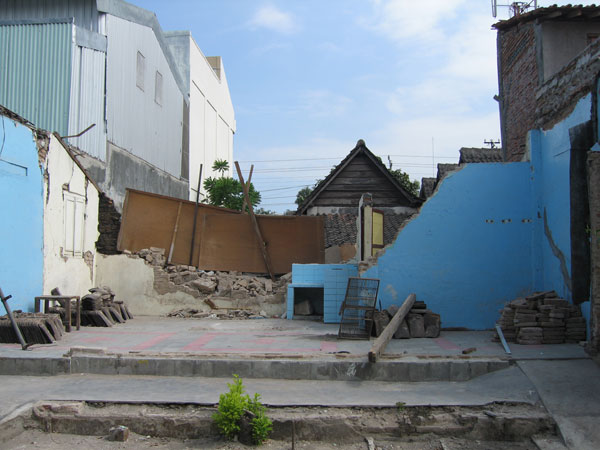
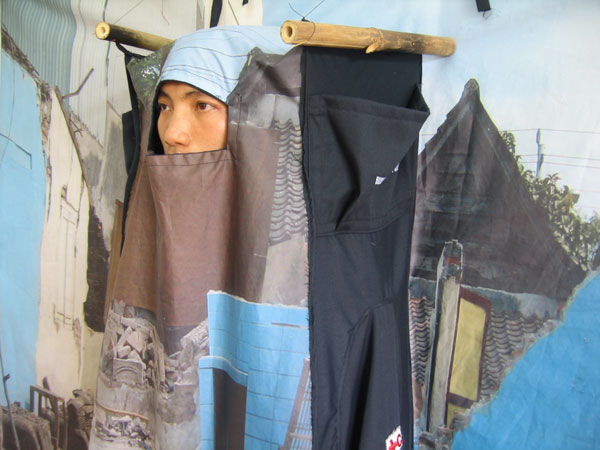
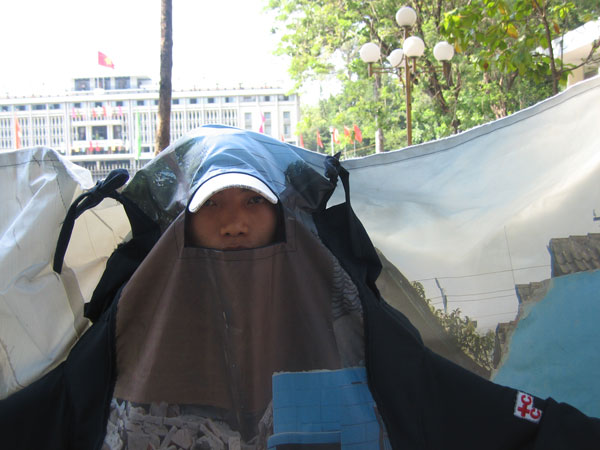
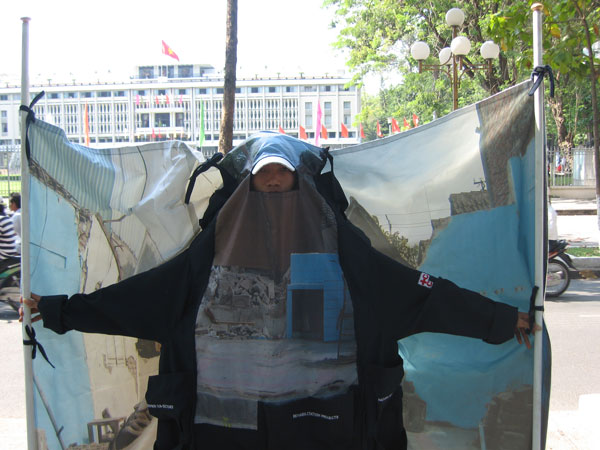
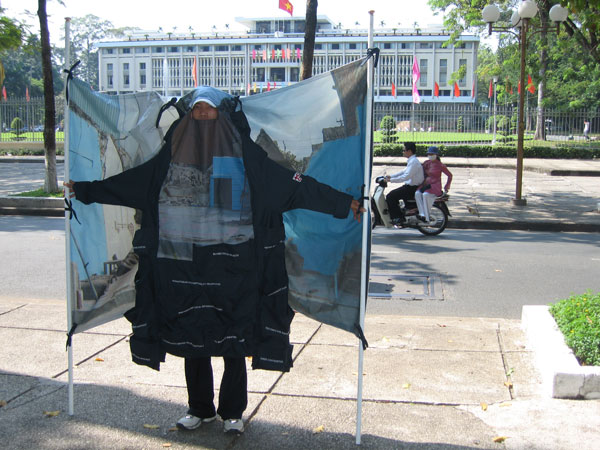
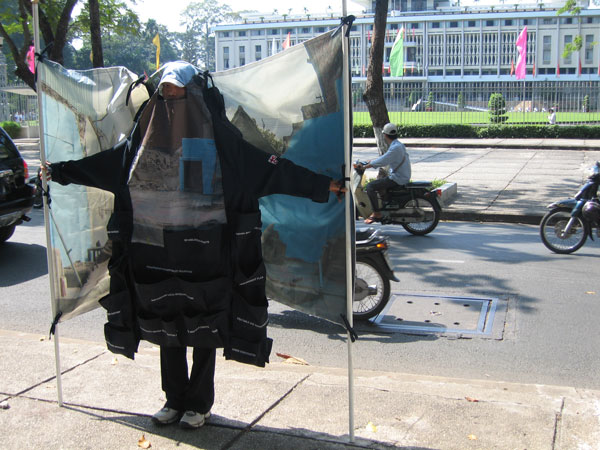
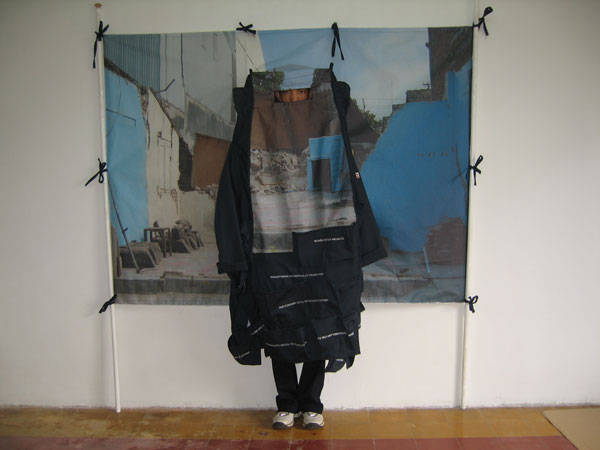
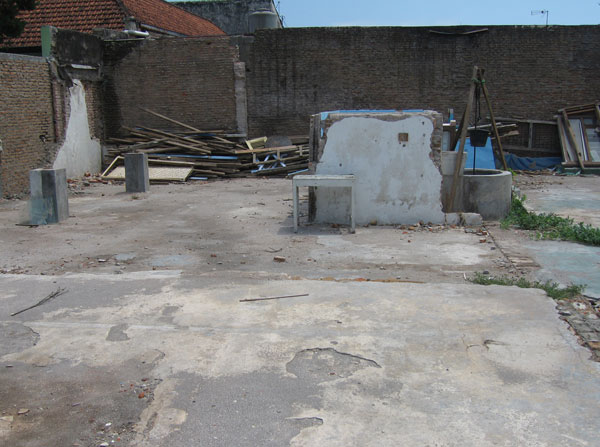
Three costumes (between costumes / shelters / tents / flags) are made out of digital photographs of the earthquake rubble or spots with left overs of former house holds. Everything destroyed except some concrete constructions, some cupboards still standing there, etc. With everything destroyed, how to build up again? Do you want to replace the old or do we want to improve. Do you have the ability to improve?
I made those shelters out of digital prints of empty lands near my house in southern Yogyakarta, Indonesia, where total houses where destroyed by the earth quake last May. The shelters are actually a satire to the organizations that took over places and spots where common people lived before disasters (war or nature) . Each different NGO, divided by religion, country and vision, claims those places for recovery projects. They claim a certain area and place their flags to border their land and start their field work and write their proposals full of specific NGO talk. Those shelters or flags I made, I brought to Saigon in Vietnam and placed them in front of a site that was destroyed and rebuild after the war and became the Independence Museum.
NGO Talk:
Bridge funding proposal
Procurement plan
Rights bases approach
Specific log frames
Aided self-help construction model
Shelter schedule
Livelihoods comparison pre- and post- earthquake
Longer-term program
Watsan facilities
Families re-established, re-located, re- settled
Community facility
Rehabilitation projects
Under construction
Households undergo participatory assessment
Advocacy platforms
National disaster management bill
Advocacy and capacity building
Rice field rehabilitation
Development of humanitarian accountability framework
Community monitoring of relief efforts
Strategy for empowering
Community-based organizations
Establishing participatory local governance systems and structures
To integrate community feedback
Immediate reconstruction design and implementation
The overall strategy
On-going community-driven reconstruction pilots
Equitable and sustainable recovery
Vulnerable groups
Natural recourses and livelihoods systems
Internally displaced people
Baseline surveys
Non-farm micro enterprise sub-sectors
Restoring shelters for families
Its prior experience in-country
A participatory rural appraisal (PRA)
Pre-selected communities
To define and target selection framework for potential beneficiaries
Urban poor self-employed
Heavily impacted area
Heavy reliance on informal sector
Formalized agreements
Etc.









































































